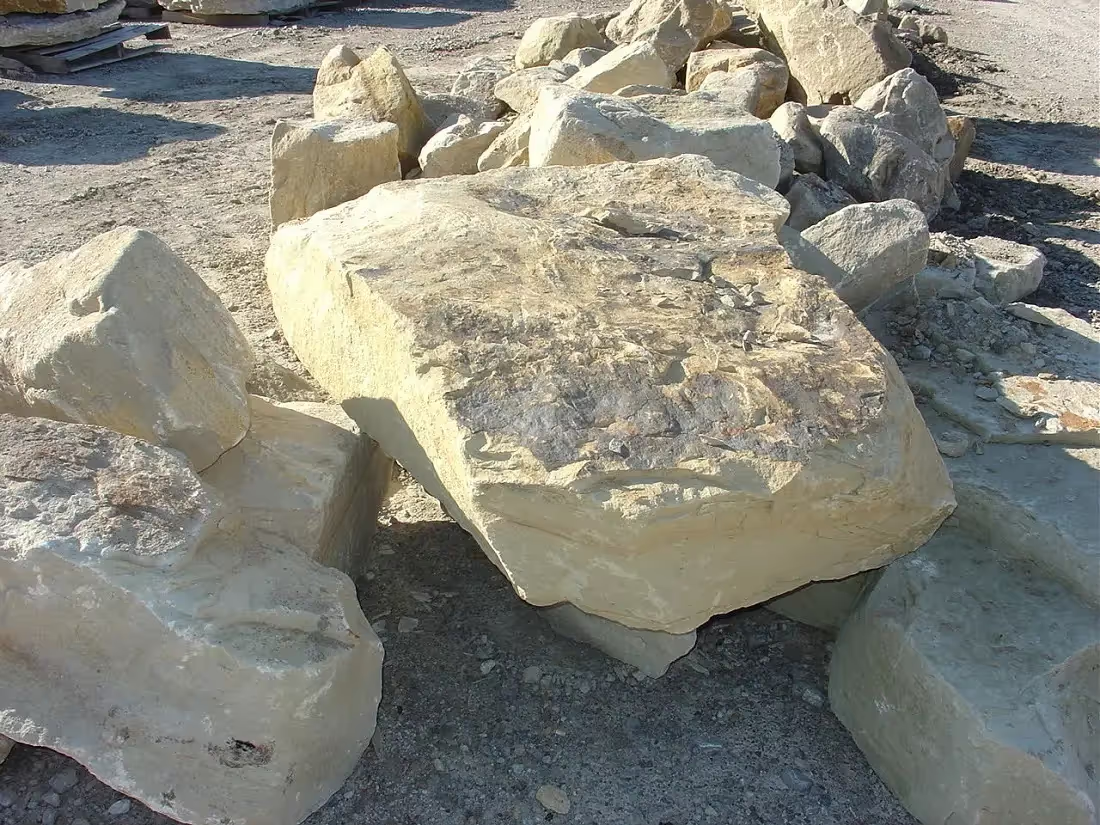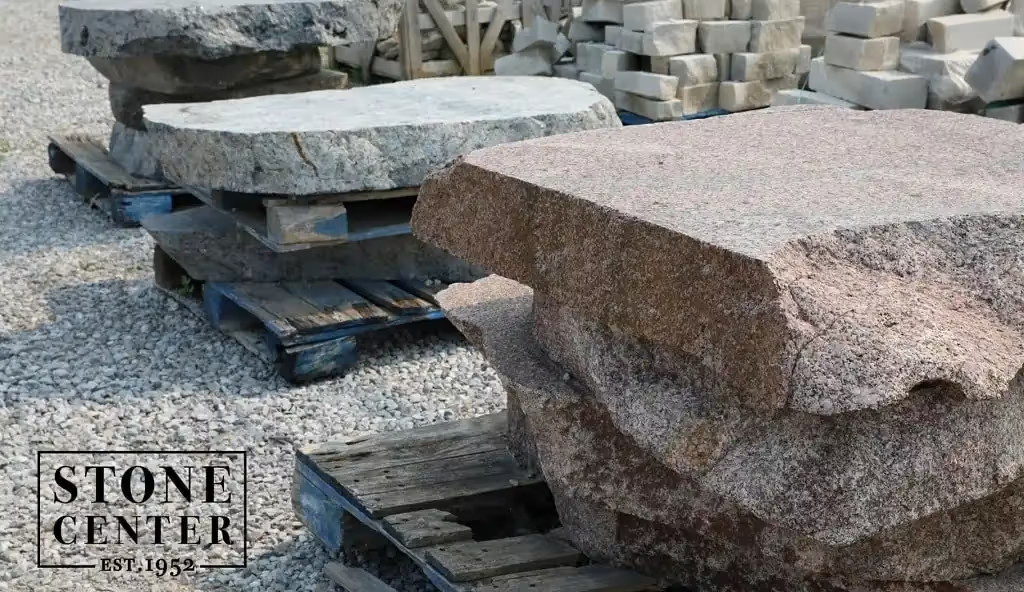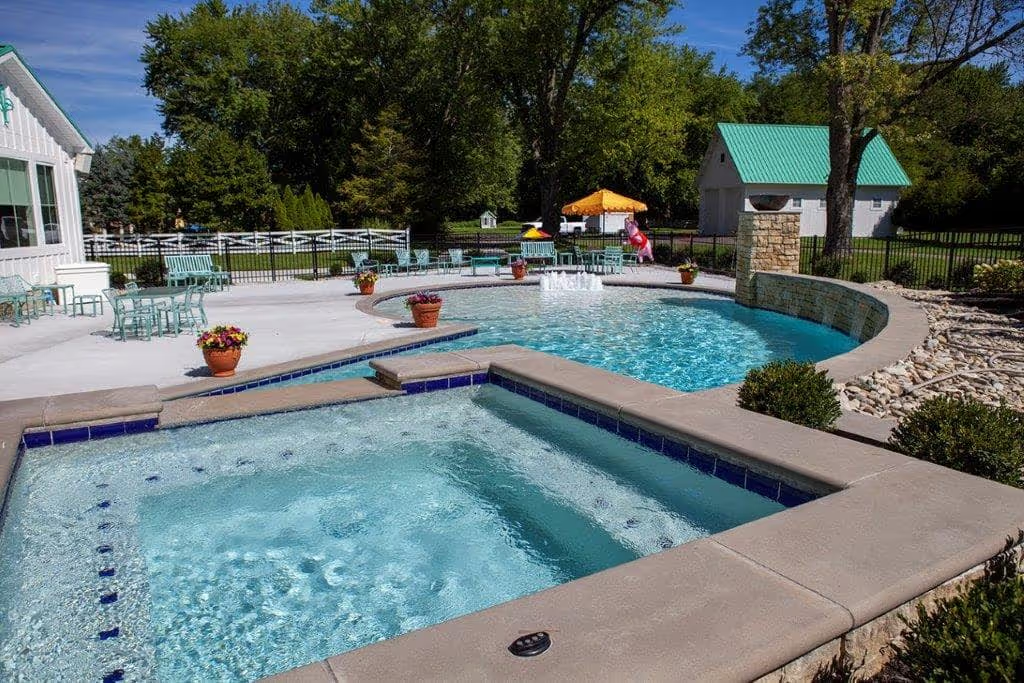- Stone Center
- Blog
Limestone vs. Granite: Which Stone Is Right for Your Project?
21/7/2025
7/8/2025
Limestone vs. Granite: Which Stone Is Right for Your Project?

Did you know that granite can withstand temperatures up to 1,200°F, while limestone begins to decompose at just 1,500°F? This is just one of many differences between these two popular natural stones that can make or break your project decision. You might be wondering which is best for your upcoming project.
As Ohio's trusted custom limestone fabricators, Stone Center has created this comprehensive guide to help you understand the fundamental differences between limestone and granite, compare their real-world performance in various applications, analyze true costs, including long-term maintenance, and evaluate their environmental impact. Our goal is to help you make an informed decision based on expert recommendations for your project’s unique needs.
What Is Limestone?

Limestone is a sedimentary rock composed of calcium carbonate. It makes up roughly 10% of the total volume of all sedimentary rocks on Earth and is unique due to its composition of fossilized shell-producing and coral-building organisms. From a geological perspective, limestone formation occurs either in marine waters or during cave formation.
Limestone is mostly formed in the shallow, calm, and warm marine waters of the Caribbean Sea, Indian Ocean, Persian Gulf, and the Gulf of Mexico, where shells and other items build up over time and compact into large deposits. Limestone derived from caves comes from all around the world, with some of the biggest quarries right here in the US. This natural rock is extracted either by blasting or mechanical excavation.
What Is Granite?

Granite is an igneous rock composed mainly of quartz and feldspar. It’s an intrusive rock, meaning it was formed from molten lava deep within the Earth's crust. When it cools, the lava crystallizes under intense pressure and forms rock. Granite is located throughout our planet's continental crust, most commonly in mountainous areas.
Granite is quarried from all over and takes on the visual characteristics of the minerals most prevalent in the region it's from. For example, Brazilian granite tends to be more pink and blue. The main suppliers of commercial granite are Brazil, China, India, Spain, Italy, and North America. A special saw called a slab saw is used to cut granite. It can take as long as a few hours to a whole day to cut a single slab.
Quick Facts: Limestone vs. Granite at a Glance
Limestone and granite are two popular natural stone materials that are used in construction and for decorative purposes. Both have their unique properties that make them suitable for different applications.
To learn more about the differences, keep reading as we explore the unique qualities that set these architectural stones apart.
Understanding Your Stone's Chemistry (And Why It Matters)
The academic, geological definition of limestone classifies sedimentary rock consisting of at least 50% calcite and dolomite, with less than 50% other rock materials as limestone. However, the commercial definition of the stone stipulates the rock must consist of 80% calcite and dolomite, with less than 20% other rock materials. Hence, commercial-grade limestone is stronger and less susceptible to degradation.
How is granite different from limestone? Granite is primarily made from quartz, orthoclase, microcline, and mica and is not a fossilized material. Its mineral composition is typically 20-60% quartz and feldspar. Many rocks can be classified as granite due to their mineral composition. However, the commercial definition of granite refers to rock with visible interlocking grains that make it harder than marble.
The Look and Feel Factor

Granite contains large, coarse grains visible to the human eye. Its mineral composition gives it a red, pink, gray, or white color, with darker mineral grains usually visible throughout. This igneous rock may display flecks and veins, from small lines to large sweeping veins. Granite is named after its “granular” texture, which is easy to spot, even though it can be polished to a brilliant shine.
Upon close inspection, you can usually see fossil fragments, like bits of shell in limestone. Its color ranges from white to gray to tan or taupe. Limestone rich in organic matter may even be black, while the presence of iron or manganese can give it a yellow to red color. It is a softer rock, susceptible to being scratched, and will effervesce in acid.
The aesthetic differences extend beyond color:
- Granite offers dramatic patterns and can achieve a mirror-like polish.
- Limestone provides subtle elegance with its uniform appearance and soft, natural finish.
From Kitchens to Patios: Matching Stone to Purpose
When choosing between granite and limestone, most homeowners can agree that performance is crucial. Let's explore the most common uses and see which stone takes the crown.
Kitchen Countertops: The Ultimate Test
Your kitchen countertop faces daily challenges: hot pots, sharp knives, acidic spills, and constant use. Here's how each stone measures up:
Winner for kitchens: Granite's superior durability and low maintenance make it the clear choice for kitchen surfaces that withstand hard work.
Outdoor Applications: Weather and Wear
After quarrying, limestone is cut into slabs and blocks of a predetermined size, which are used extensively in the construction of roads, buildings, and decorative monuments. This versatile natural stone is also suitable for use at home as pavers, cladding, and aggregates for fireplaces, kitchens, and bathroom countertops, as well as for water features.
At Stone Center, we even stock superior grades of limestone sills and limestone steps.
Ready to see limestone in action? Explore our portfolio of stunning limestone applications to get inspired for your outdoor project.
Commercial Buildings: Making a Statement
Like limestone, granite has been used since ancient times as a construction, decorative, and architectural stone. It's an elegant and hardy material appropriate for a range of interior projects such as countertops, fireplaces, floors, stair treads, and pillars. Homes and buildings with granite features produce impressions of elegance and beauty.
Limestone and Granite: Cost Comparison
When evaluating the costs of limestone and granite, several factors contribute to their pricing. Limestone, typically ranging from $30 to $50 per square foot, is generally more affordable than granite. This cost efficiency makes limestone a popular choice for larger projects and applications such as cladding and building exteriors.
In contrast, granite, with prices spanning from $40 to $60 per square foot, is pricier, reflecting its higher durability and aesthetic appeal. The cost of granite varies significantly based on the type, finish, and especially the source, with exotic varieties being notably more expensive. These costs are not just limited to the purchase; installation and maintenance can add to the overall expenditure.
Which Stone Wins? Your Quick Decision Guide.
Although there are many factors, choosing between limestone and granite doesn't have to be complicated. After helping thousands of Ohio homeowners and contractors select the perfect stone for their projects, we've discovered that the right choice always comes down to three simple factors: where you'll use it, how much maintenance you're willing to do, and what Mother Nature throws at your property.
Here's our proven decision process that takes the guesswork out of stone selection:
Location first:
- Kitchen countertops or bathroom vanities? → Granite wins.
- Outdoor patios, garden walls, or facades? → Limestone excels.
- High-traffic commercial spaces? → Granite's durability is essential.
Be honest about maintenance:
- Want to seal once and forget for years? → Choose granite.
- Willing to seal annually and clean spills quickly? → Limestone works.
- No time for maintenance? → Granite is your only option.
Consider your climate:
- Harsh winters with road salt? → Granite resists better.
- Mild climate or covered areas? → Limestone performs well.
- Urban area with acid rain? → Granite holds up better.
The bottom line: Match the stone to your lifestyle. Granite forgives neglect, but costs more upfront. Limestone offers beauty and value, but needs your attention. There's no wrong choice — only the wrong application.
.webp)
Make Your Vision a Reality with Stone Center
Are you considering granite, limestone, or other natural stone stockists? Stone Center is a leading fabricator and supplier of superior-quality natural stone. We're always happy to offer free expert advice, quotations, and recommendations to ensure you're satisfied with your project. We have an excellent range of natural stone products. Why not take a look and contact us?
FAQ
.avif)
Jon, the owner of Stone Center, is a knowledgeable expert in natural stone products, specializing in various types of stone for landscaping and architectural projects. Passionate about promoting the beauty and versatility of natural stone, Jon aims to use these blogs to inspire readers with creative ideas to upgrade their homes.
How much does it cost to get a stone restored?
How much you end up spending to restore stone varies on the type of stone, the technique, and the stone’s current condition. Stone in good condition will cost less to restore, whereas stone that has a lot of wear and tear may require a longer restoration.







